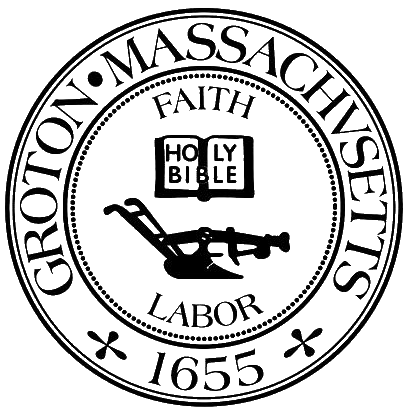Understanding the Town of Groton Fiscal Year 2023 Tax Bill and the Tax Billing Process
Fiscal Year 2023 Tax Bill
The average tax bill (a home valued at $633,985) in Groton grew by about $717 in Fiscal Year 2023 (July 1, 2022 – June 30, 2023). The bills are significant for two reasons. First, fifty (50%) percent of the permanent debt service for the Florence Roche Elementary School Construction Project is contained on the bill for the first time. Second, due to the incredible real estate year in 2021, the Assessors had no choice but to raise property values by an average of 18%. Under Proposition 2½, the Assessors are required to bring property values between 90% and 110% of full and fair cash value. The Fiscal Year 2023 Valuation is based on sales from Calendar Year 2021. The extraordinary real estate market last year gave them very little choice but to raise values by that amount.
Under Proposition 2½, when values increase, the tax rate lowers, however, the Town still has to raise the same amount through taxation. For example, in Fiscal Year 2022, the average home was valued at $535,100 and the tax rate was $17.19. The average tax bill was $9,198 based on the Town’s need to raise $36,298,084. In Fiscal Year 2023, the Town needs to raise $39,167,728. If the real estate values stayed the same, the tax rate necessary to cover that levy would have been $18.56 and the average tax bill would be $9,931 (an increase of $733 due primarily to the debt service on the Florence Roche Elementary School Construction Project). Since the Assessors were required to raise values as described in the first paragraph above by approximately eighteen (18%) percent, the average home in Groton is now valued at $633,985. The tax rate, instead of being $18.56, is now $15.64 based on the FY 2023 levy of $39,167,728 and the average bill is $9,915 (an increase of $717). The rise in value did not increase the amount of money the Town is authorized to raise. The Town is not raising more money than legally allowed because of the increase in values. Please note that of the $717 increase in the average tax bill in FY 2023, approximately $300 is the increase based on the allowed increase in the Levy under Proposition 2½ (2½% increase plus new growth), and approximately $417 is the increase for the debt service for the Florence Roche Elementary School Construction Project.
Tax Billing Schedule
Groton has a quarterly tax billing schedule of real estate and personal property taxes. Tax payments are due on August 1st, November 1st, February 1st and May 1st. The tax billing year is based on a fiscal year and not a calendar year.
The fiscal year is from July 1st to June 30th.
Building assessments are based on their status as of June 30th, prior to the start of the fiscal year. Land assessments are based on January 1st of the calendar year.
First two quarters are preliminary tax bills based on last year taxes. The preliminary tax bills are approximately 25% of last year taxes for the 1st & 2nd quarters.
Example: If a taxpayer had a total tax liability of $10,000 for the previous year, using 25% of last year total tax bill, the 1st & 2nd quarter tax bills would be $2,500 per quarter. The total of these two quarter tax bills would be $5,000.
After the tax rate for the fiscal year is set (around the first week in December), your 3rd quarter tax bill will be sent out towards the end of December. The 3rd quarter tax bill is also known as the actual tax bill for that fiscal year. This bill will show the new tax rate, the new assessed valuation, and the actual amount of taxes owed for the fiscal year.
The actual taxes for the fiscal year will be calculated based on the new tax rate and the new assessment of the property. After subtracting the preliminary tax bills from the total taxes due, the balance owed will be divided into two equal installments for the 3rd & 4th quarter tax bills.
Example: The actual tax bill for the above taxpayer is calculated to be $12,000 for the year. We subtract the total of the preliminary payments $5,000 (see above example) leaving a balance of $7,000 due. This then would be divided into two equal payments of $3,500 due for the 3rd & 4th quarter tax bills.
Total Tax Bill for the Year: $12,000
Less Preliminary Taxes: $5,000
Balance Due: $7,000
3rd Quarter Tax Bill: $3,500
4th Quarter Tax Bill: $3,500
Preliminary Tax Bill in the following year:
1st Quarter Preliminary Bill: $3,000
2nd Quarter Preliminary Bill: $3,000

